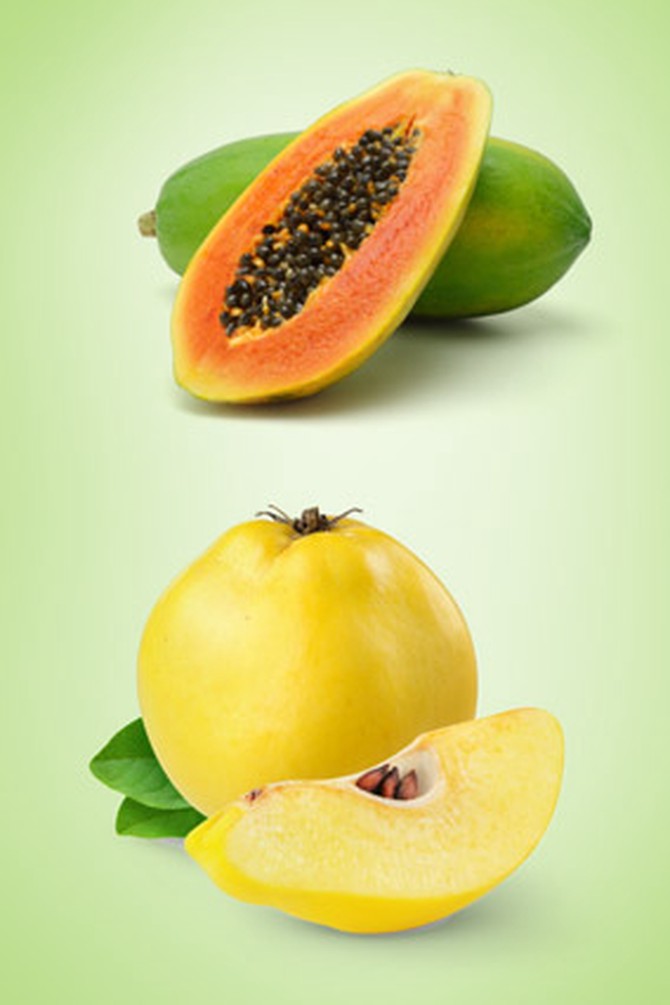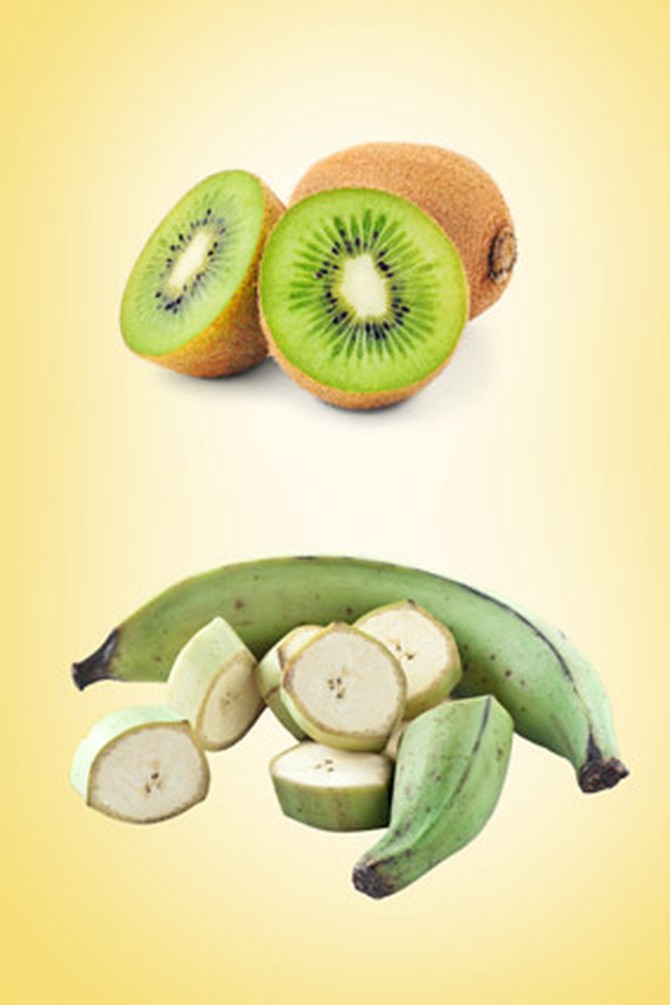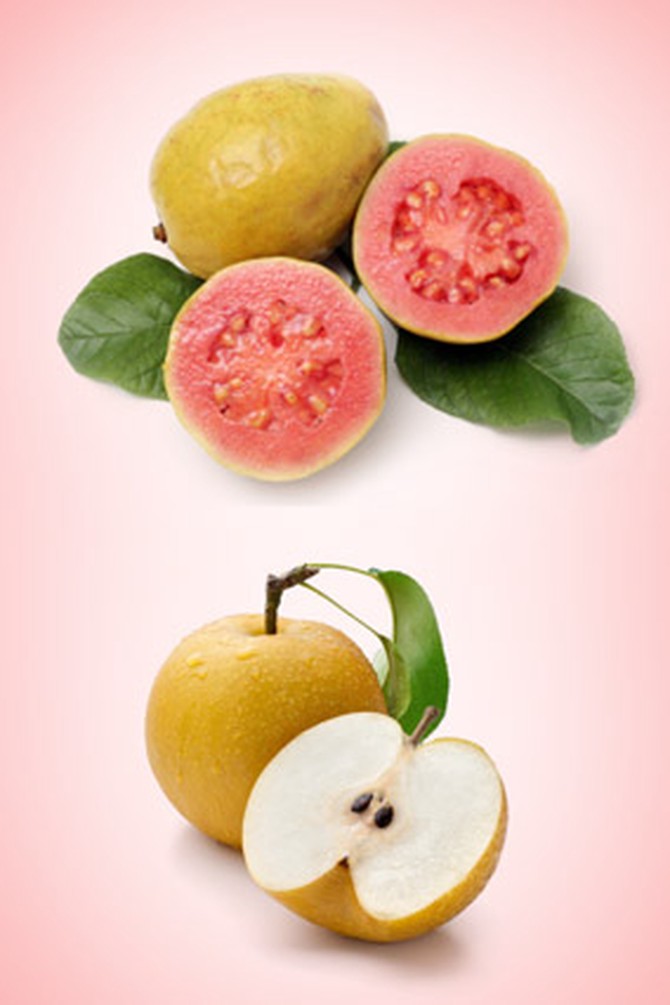Beat Fruit Fatigue with 8 Fresh Alternatives
Some nutritionists say the trick to consuming more fruit is trying new fruit. (See you later, watermelon. Hello, guava!)
By Kelly DiNardo

Photo: Mauricio Alejo
An apple a day may...drive you bananas. Eighty percent of Americans eat less than the recommended daily intake of fruit (one and a half to two cups for women), and some experts blame this shortfall on "fruit fatigue." It turns out that four staples account for nearly half of the fruit consumption among women: apples, bananas, oranges, and watermelon. But when you eat the same foods over and over again, says Joan Salge Blake, a spokesperson for the Academy of Nutrition and Dietetics, "you get bored and wind up not wanting to eat them at all."
As a result, you could be missing out on a host of benefits, from cancer-fighting agents to improved cardiovascular health. A recent French study discovered that a diet rich in fruit might even help preserve your memory as you age. "Plus, the more varied your diet," Blake notes, "the more likely you are to get all the vitamins, essential minerals, and phytonutrients you need." Next, a guide to expanding your fruit palate.
As a result, you could be missing out on a host of benefits, from cancer-fighting agents to improved cardiovascular health. A recent French study discovered that a diet rich in fruit might even help preserve your memory as you age. "Plus, the more varied your diet," Blake notes, "the more likely you are to get all the vitamins, essential minerals, and phytonutrients you need." Next, a guide to expanding your fruit palate.

Photo: Thinkstock
If You Like Apples...
Similar nutrition: Papaya
A medium papaya has even more fiber than a medium apple—enough to satisfy about 20 percent of your daily adequate intake. Add papaya to a salad with sliced jicama, cucumber, lime juice, chili powder, and salt.
Similar taste: Quince
This relative of the apple is denser and more tart. To soften and sweeten, David Lebovitz, author of Ready for Dessert, poaches 8 quince with 7 cups water, ½ cup honey, 1 cup sugar, lemon juice, and 1 vanilla bean.
A medium papaya has even more fiber than a medium apple—enough to satisfy about 20 percent of your daily adequate intake. Add papaya to a salad with sliced jicama, cucumber, lime juice, chili powder, and salt.
Similar taste: Quince
This relative of the apple is denser and more tart. To soften and sweeten, David Lebovitz, author of Ready for Dessert, poaches 8 quince with 7 cups water, ½ cup honey, 1 cup sugar, lemon juice, and 1 vanilla bean.

Photo: Thinkstock
If You Like Bananas...
Similar nutrition: Kiwi
Kiwis are another good source of potassium. But that's not all: They're among the top five most nutrient-dense fruits. Garnish fish or chicken with a kiwi-papaya-mango salsa.
Similar taste: Plantain
"Plantains are like a cross between a banana and a yam," says Rachel Saunders, founder of the artisanal jam company Blue Chair Fruit. Try using the fruit, baked or sautéed, as a side to spicy dishes.
Kiwis are another good source of potassium. But that's not all: They're among the top five most nutrient-dense fruits. Garnish fish or chicken with a kiwi-papaya-mango salsa.
Similar taste: Plantain
"Plantains are like a cross between a banana and a yam," says Rachel Saunders, founder of the artisanal jam company Blue Chair Fruit. Try using the fruit, baked or sautéed, as a side to spicy dishes.

Photo: Thinkstock
If You Like Watermelon...
Similar nutrition: Guava
Guava and watermelon are both rich in lycopene, the red pigment that's linked to a lower risk of cancer and heart disease. Enjoy guava on its own (seeds and all), or toss it into a seafood salad or a smoothie.
Similar taste: Asian pear
Asian pears have a moist, crisp consistency resembling that of watermelon. Julienned slices add a mild sweetness to watercress or spinach salad, and a lightness to chicken-Cheddar panini.
Guava and watermelon are both rich in lycopene, the red pigment that's linked to a lower risk of cancer and heart disease. Enjoy guava on its own (seeds and all), or toss it into a seafood salad or a smoothie.
Similar taste: Asian pear
Asian pears have a moist, crisp consistency resembling that of watermelon. Julienned slices add a mild sweetness to watercress or spinach salad, and a lightness to chicken-Cheddar panini.

Photo: Thinkstock
If You Like Oranges...
Similar nutrition: Star fruit
The mildly sweet and slightly acidic star fruit offers a healthy dose of vitamin C (½ cup provides about 25 percent of your daily allowance), as well as choline, for healthy cells. It also makes a pretty addition to fruit salad.
Similar taste: Kumquat
Saunders says kumquats are "like oranges with a little bite." Gently roll the fruit with your fingers to release the skin's sweet essential oils; then pop the orb into your mouth whole.
Keep Reading: 4 ways to get nutrients from your food (instead of a pill)
The mildly sweet and slightly acidic star fruit offers a healthy dose of vitamin C (½ cup provides about 25 percent of your daily allowance), as well as choline, for healthy cells. It also makes a pretty addition to fruit salad.
Similar taste: Kumquat
Saunders says kumquats are "like oranges with a little bite." Gently roll the fruit with your fingers to release the skin's sweet essential oils; then pop the orb into your mouth whole.
Keep Reading: 4 ways to get nutrients from your food (instead of a pill)
From the April 2012 issue of O, The Oprah Magazine

